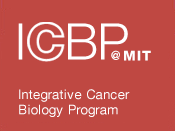| Title | A dynamical systems model for combinatorial cancer therapy enhances oncolytic adenovirus efficacy by MEK-inhibition. |
| Publication Type | Journal Article |
| Year of Publication | 2011 |
| Authors | Bagheri, N, Shiina, M, Lauffenburger, DA, Korn, WM |
| Journal | PLoS Comput Biol |
| Volume | 7 |
| Issue | 2 |
| Pagination | e1001085 |
| Date Published | 2011 Feb |
| ISSN | 1553-7358 |
| Keywords | Adenoviridae, Antineoplastic Combined Chemotherapy Protocols, Cell Cycle, Cell Survival, Combined Modality Therapy, Computer Simulation, Coxsackie and Adenovirus Receptor-Like Membrane Protein, HCT116 Cells, Humans, MAP Kinase Signaling System, Mitogen-Activated Protein Kinase Kinases, Models, Biological, Neoplasms, Nonlinear Dynamics, Oncolytic Virotherapy, Receptors, Virus, Reproducibility of Results, Viral Vaccines, Virus Replication |
| Abstract | Oncolytic adenoviruses, such as ONYX-015, have been tested in clinical trials for currently untreatable tumors, but have yet to demonstrate adequate therapeutic efficacy. The extent to which viruses infect targeted cells determines the efficacy of this approach but many tumors down-regulate the Coxsackievirus and Adenovirus Receptor (CAR), rendering them less susceptible to infection. Disrupting MAPK pathway signaling by pharmacological inhibition of MEK up-regulates CAR expression, offering possible enhanced adenovirus infection. MEK inhibition, however, interferes with adenovirus replication due to resulting G1-phase cell cycle arrest. Therefore, enhanced efficacy will depend on treatment protocols that productively balance these competing effects. Predictive understanding of how to attain and enhance therapeutic efficacy of combinatorial treatment is difficult since the effects of MEK inhibitors, in conjunction with adenovirus/cell interactions, are complex nonlinear dynamic processes. We investigated combinatorial treatment strategies using a mathematical model that predicts the impact of MEK inhibition on tumor cell proliferation, ONYX-015 infection, and oncolysis. Specifically, we fit a nonlinear differential equation system to dedicated experimental data and analyzed the resulting simulations for favorable treatment strategies. Simulations predicted enhanced combinatorial therapy when both treatments were applied simultaneously; we successfully validated these predictions in an ensuing explicit test study. Further analysis revealed that a CAR-independent mechanism may be responsible for amplified virus production and cell death. We conclude that integrated computational and experimental analysis of combinatorial therapy provides a useful means to identify treatment/infection protocols that yield clinically significant oncolysis. Enhanced oncolytic therapy has the potential to dramatically improve non-surgical cancer treatment, especially in locally advanced or metastatic cases where treatment options remain limited. |
| DOI | 10.1371/journal.pcbi.1001085 |
| Alternate Journal | PLoS Comput. Biol. |
| PubMed ID | 21379332 |
| PubMed Central ID | PMC3040662 |
| Grant List | R01 CA095701 / CA / NCI NIH HHS / United States R01 CA118545 / CA / NCI NIH HHS / United States U54 CA11297 / CA / NCI NIH HHS / United States U54-CA112967 / CA / NCI NIH HHS / United States |
